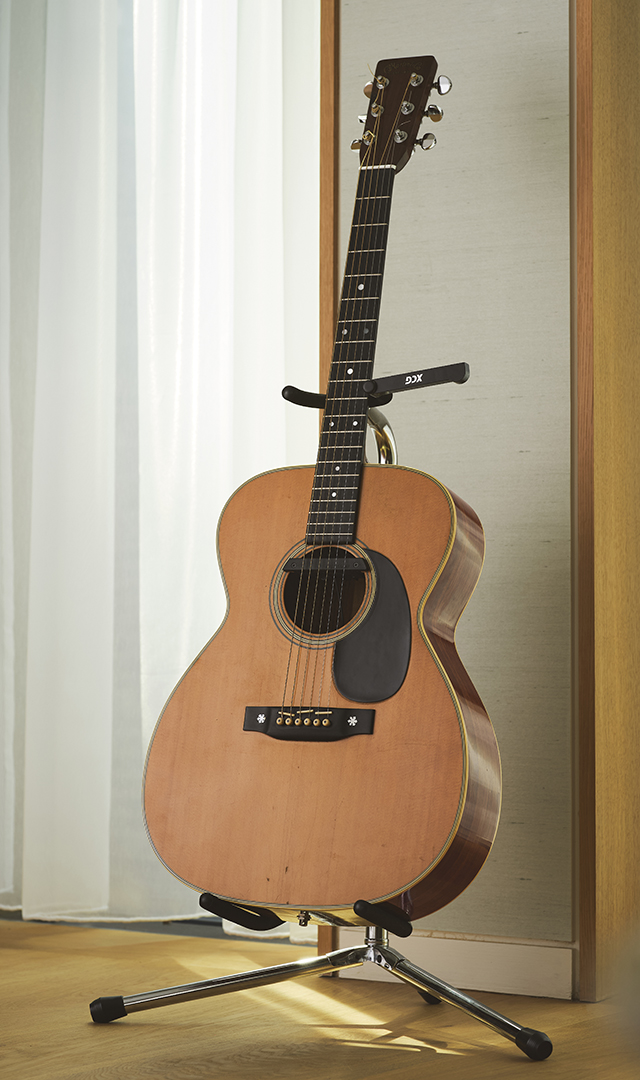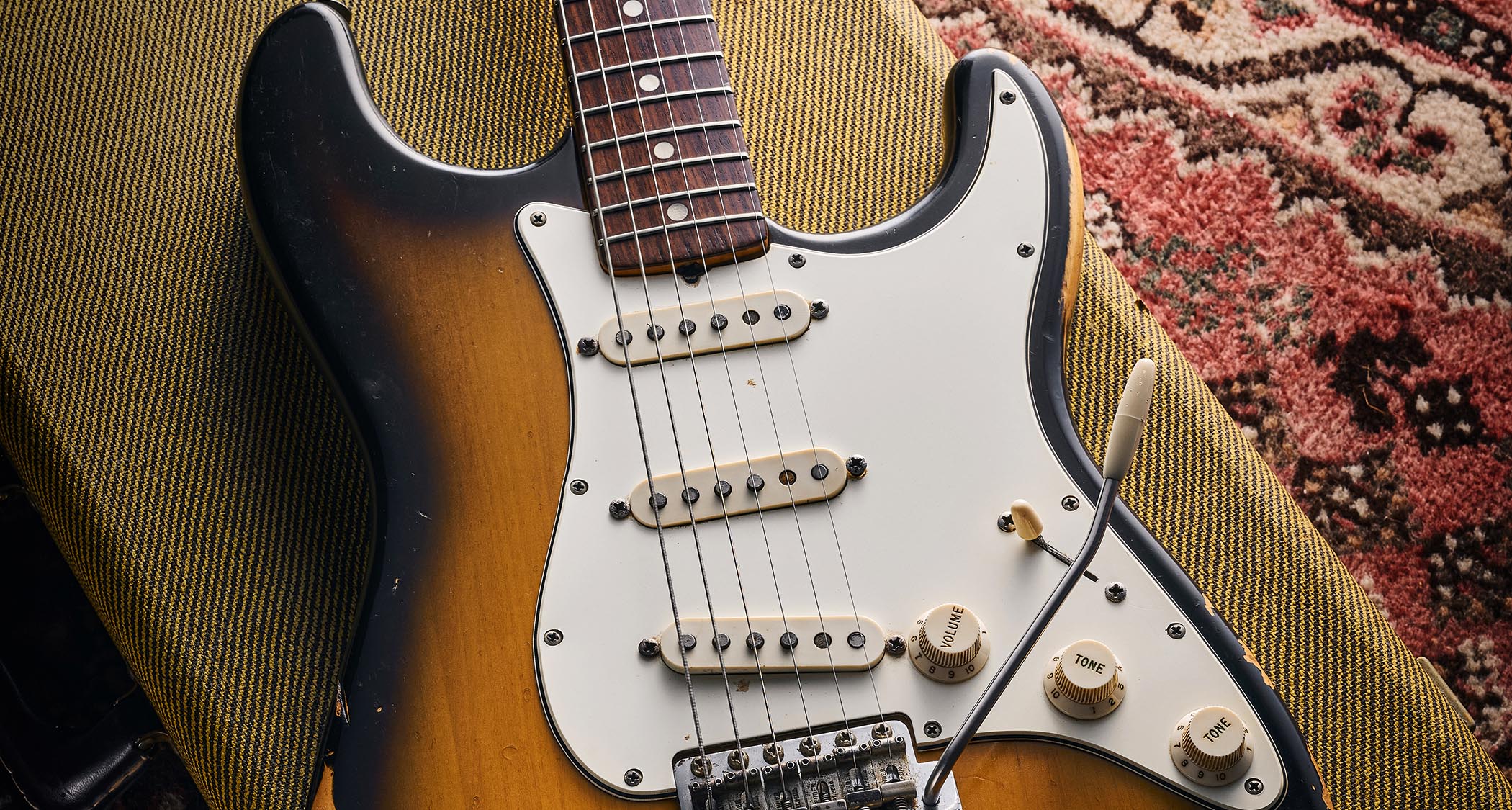“It's the one he took around with him – the one he went back to the hotel with after gigs”: Up close with the 1974 Martin that Eric Clapton used to write Wonderful Tonight
Eric Clapton’s Wonderful Tonight is one of the great love songs of our time. So when the guitar he wrote it on, a 1974 Martin 000-28, came up for auction in London, we didn’t need a second invitation to go and take a closer look

Behind many platinum-selling songs lies a simple acoustic guitar, one that is always close to the artist, at home or on the tour bus. One such guitar is Eric Clapton’s 1974 000-28, the instrument upon which he wrote Wonderful Tonight – a love song inspired by his then-girlfriend Pattie Boyd that became his best-selling single ever.
The guitar has been largely out of the public eye since it was sold at auction to a private collector in 1999 for $173,000, with the proceeds going to Clapton’s Crossroads Centre for rehabilitation from drug and alcohol addiction.
That all changed earlier this year, however, when Bonham’s auction house of Knightsbridge, London, announced that it would be presenting the guitar for sale, once again, on behalf of its current owner. Would we like to come down and take a look before it went under the hammer? Yes, we would, came the swift reply.
For this guitar is emblematic of more than just a hugely important song. Built in 1974, it became a constant companion of Clapton in the early phase of his solo career after Derek And The Dominoes disbanded.
It also established a long-running connection between Clapton and Martin’s 000-size acoustic, the shorter-scaled sibling to the OM-size guitars built by the company but sharing the OM’s hourglass shape.
This association reached its peak in January 1992 with the recording of Eric Clapton’s MTV Unplugged performance, during which he used a vintage 1939 000-42 – the ‘42’ part denoting the ‘style’ or level of ornamentation of the guitar.
Clapton’s longtime sideman Andy Fairweather Low, who accompanied him on the recording, which became the best-selling Unplugged album, played a 000-28 that had been upgraded to Style 45 appointments.
All the latest guitar news, interviews, lessons, reviews, deals and more, direct to your inbox!
The success of the Unplugged concert not only boosted the profile of Martin’s ‘000’ series of guitars but reinvigorated the fortunes of the whole company, making this one of the most significant artist/instrument associations in Martin’s long history.
But it was the humbler 000-28 that first fired up Clapton’s love of Martin guitars, says Martin historian Dick Boak, adding that Clapton went on record that a film clip of Big Bill Broonzy playing Hey Hey on one inspired him to use the model – which leads us back to the Wonderful Tonight guitar.
In 1974, the year that particular guitar was made, the 000-28 model was being produced a little differently to the pre-war examples that first made it a classic, says Dick Boak.
“To my knowledge, a mid-’70s 000-28 would not have had scalloped braces,” Dick says of the production techniques used to make Clapton’s 1974 000-28.
“The bindings would be Boltaron instead of ivoroid. The fingerboard inlays would probably be mother-of-pearl dots instead of the vintage diamond-and-square abalone position markers. And, of course, the back and sides would be East Indian rosewood instead of the Brazilian rosewood found on pre-1964 models.”
All of these features are very typical of in-period Martin acoustics – so for a closer look at the specifics of Clapton’s 000-28, we turned to Steve Clarke, the vintage and collectible guitar expert who prepares guitars for sale for Bonham’s. Here, he shares with us what he found.
What unique features did your inspection of Clapton’s ’74 000-28 turn up?
What was interesting was those three little offset saddles that are on the bridge: you can see evidence underneath that it had an original slot cut out... It’s been done very well.
“One of the first things I could see was what they did with this bridge. I'm not sure if you spotted it, but that bridge has the two little snowflake inlays on either end – you'll see those on a Martin D-42 as well.
“But what was interesting was those three little offset saddles that are on the bridge: you can see evidence underneath that it had an original [single, horizontal saddle] slot cut out and you can just see where it's been filled in.
“It’s been done very well, but under strong light you can actually see the channel that they then filled it in and put these pieces on. It’s quite a nice job – I don't know who did it. Maybe Martin did it, who knows. But it was a nice touch.”
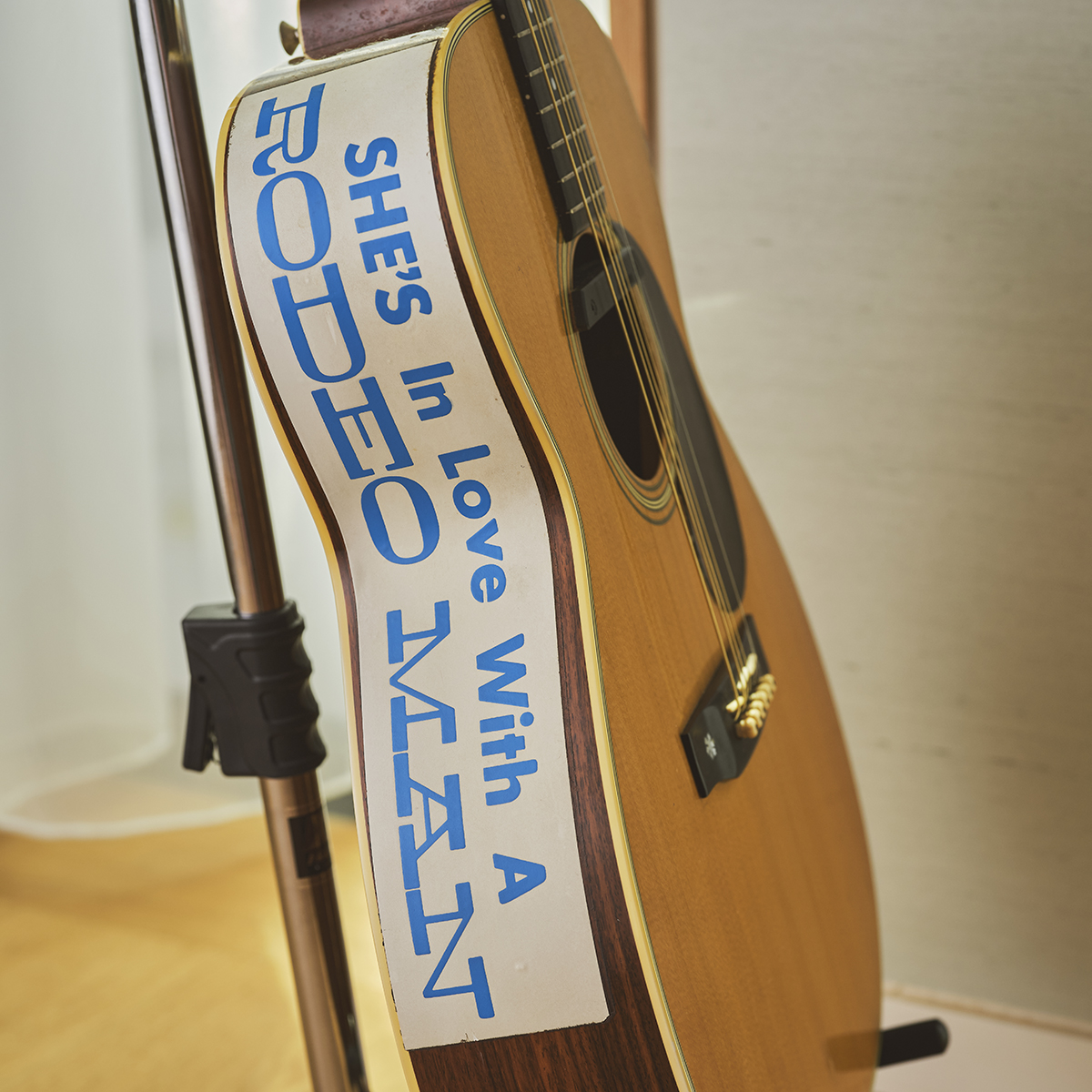
How about inside the guitar?
“I did have a root around inside the guitar. And another interesting point was there was a wire hanging down from underneath the bridge area near the bridge pins. I took an endoscope with me – always carry one of those! – and I saw that it was abruptly cut off, you know, this black wire.
“Now, to me, that was evidence of something like, say, a [contact mic] or bug-type pickup that will have had double-sided tape, or some kind of a glue or putty fastening it in place. And I've seen this before with guitar techs… it's the only way you can do it, really – there's no need for you to try and struggle to pull it out.
“But what I think might have happened is that someone, it might have been Clapton, decided to change pickups and they just cut the wire off [of the redundant contact mic] because once those things have stuck fast; after a period of time they become so difficult to shift.
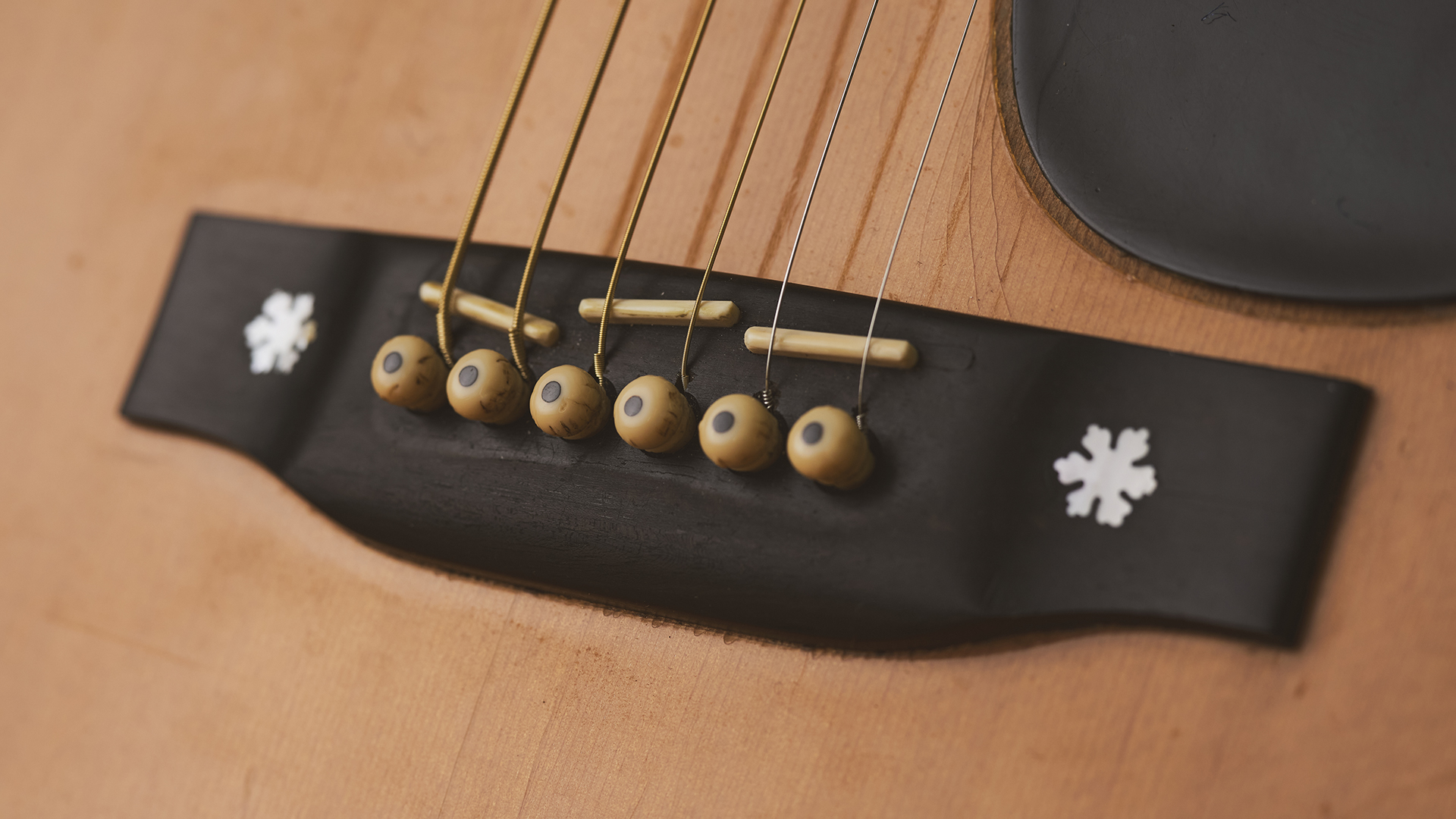
“So I think they just left it there because it's awkward to get out – so you can just cut the wire off. It’s not doing anybody any harm. I don't think it was [connected to] an undersaddle piezo-type pickup, you know? This was more like a bug-type pickup. So that's been left there.
In some images, he’s got this elongated kind of cream-coloured pickup with a wire trailing from it going across the guitar... There's no evidence anywhere that this pickup ever went into production
“Previous to that there's a curious-looking picture from [Clapton’s appearance on] the Old Grey Whistle Test where he’s got this elongated kind of cream-coloured pickup with a wire trailing from it going across the guitar [see main image, above].
“Having looked into this, there's no evidence anywhere that this [pickup] ever went into production, whatever that thing is. I've seen some rumours that it might have been a Barcus-Berry prototype. Nothing confirmed, though – it was definitely some kind of a one-off early experiment that didn't last very long.
“And, again, whatever was sticking that down, I don’t think it stayed on the guitar long because, on the surface of the guitar, there's no damage or marking to the lacquer, which you probably would get after a period of time – if you leave something like that with any sticky stuff underneath that finish is gonna have an impression of some kind around it. And so I don't think Clapton had that on too long.
“To be honest, I'd be surprised if it had been on as long as a year. The pickup that’s on it now [visible in the soundhole] is a Fishman Rare Earth that was on the guitar when it was sold to the current owner.”
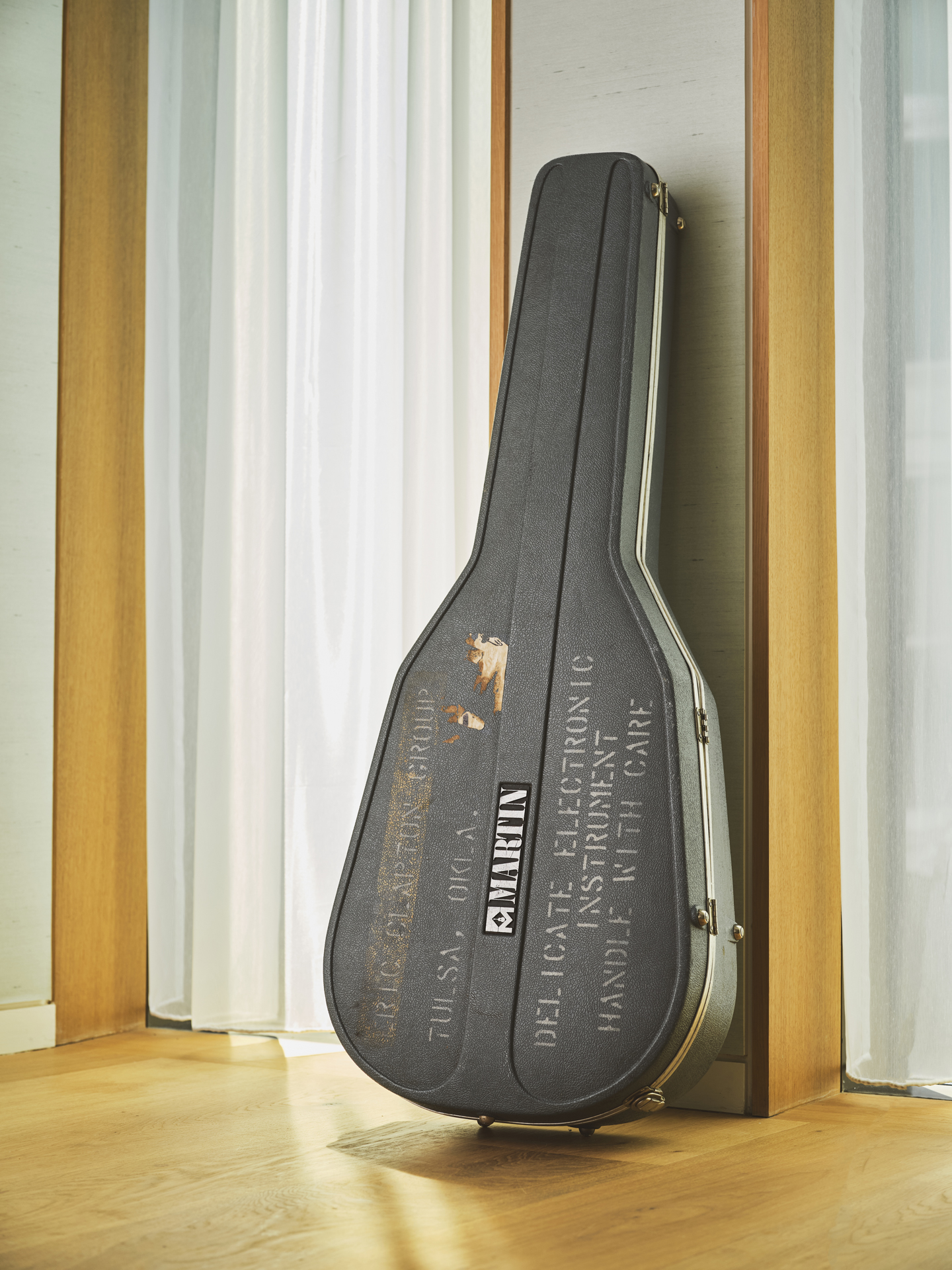
Playwear on the guitar seems fairly light. What hints that Clapton used this guitar as a go-to songwriting tool did your inspection reveal?
The cigarette burns were the first thing I spotted when I opened the case – it was facing my way and I thought, ‘Oh yeah, must be his then!’
“Well, it’s got the divots on the first couple of frets that are quite deep because of the ‘cowboy chords’, so it's a little worn in that area. I took a fretwire measurement and the 1st and 2nd frets were a little bit flat on the top, again because he's playing a lot in those areas that he's not doing a lot barre chords.
“So as you go further up to around the 4th or 5th fret you’re getting the crown back. But, yeah, that lower area is well played. Original frets, though, which is cool.”
There’s also the trademark cigarette burns on the headstock!
“Isn't that amazing? It was the first thing I spotted when I opened the case – it was facing my way and I thought, ‘Oh yeah, must be his then!” [laughs].
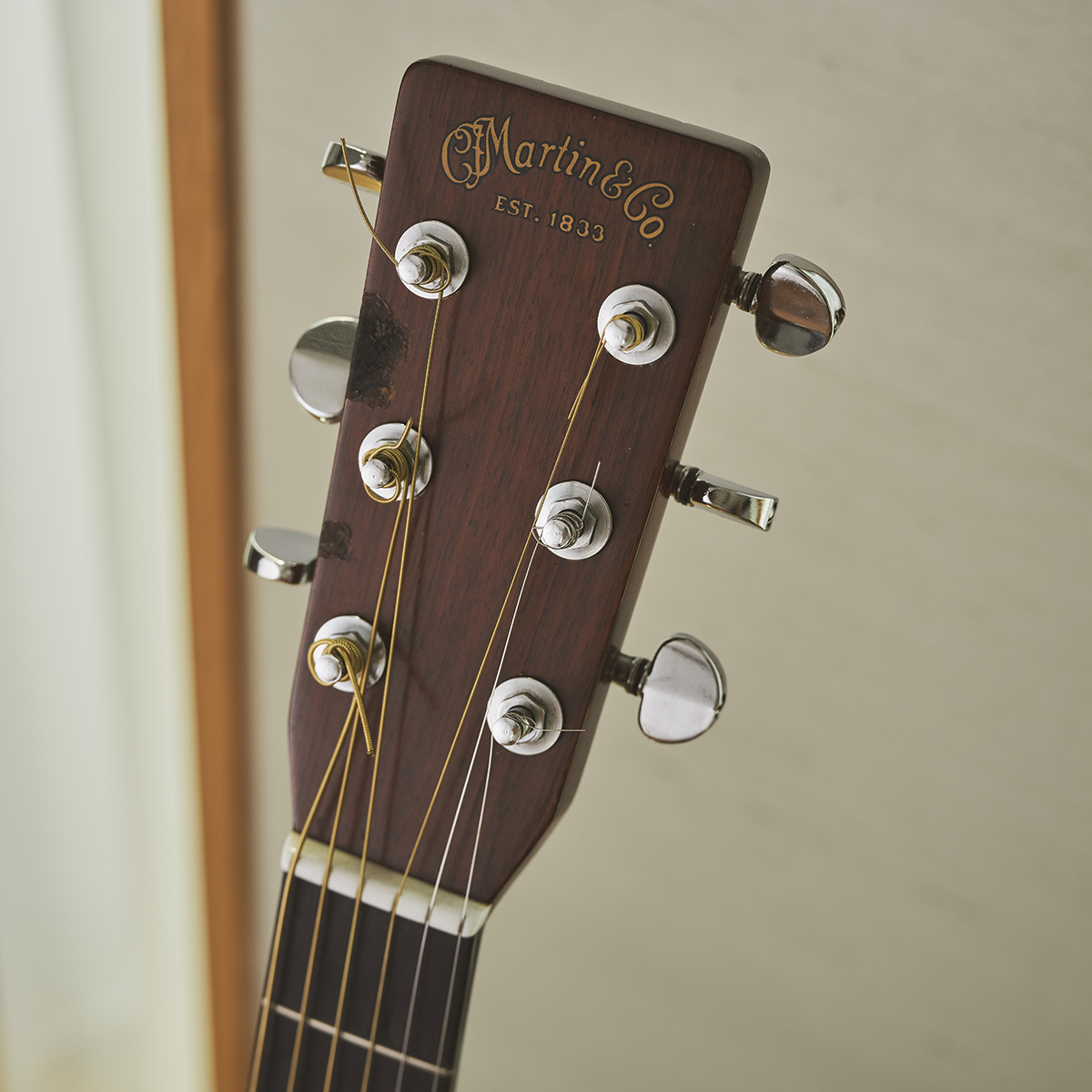
The guitar’s now some 50 years old. What sort of typical marks of natural ageing can be seen on it today?
“The scratchplate’s shrunk on it – that happens with those old ’plates. So just near the soundhole, particularly in that area, it’s shrunken back so you can see the glue line that’s been left behind; the same thing happens on ’60s Strat ’plates.
“That's why that first screw by the neck pickup has more often than not got a crack in it. It's always that screw because there's a lot of tension there and the shrinking of the celluloid just pulls it apart.”
It’s obviously a very special guitar, due to its association with Clapton and with the song Wonderful Tonight, but it also seems a very honest, workmanlike instrument. What did you like about it, in that regard?
“To me, it was the fact that it's still got the original Grover machineheads on it since Clapton had it. I mean, there's another nice thing – the fact it’s not been messed around with different machineheads or any kind of serious modifications in that way, or even refretted…
“All those things. You think, ‘Oh, that's cool.’ I like to see that. But it was his go-to guitar, apparently. It's the one he took around with him – the one he went back to the hotel with, after gigs.”
- Clapton’s 1974 000-28 goes on sale at Bonham’s, Knightsbridge in its Rock, Pop & Film sale on June 12. For more info, head to Bonhams.
Jamie Dickson is Editor-in-Chief of Guitarist magazine, Britain's best-selling and longest-running monthly for guitar players. He started his career at the Daily Telegraph in London, where his first assignment was interviewing blue-eyed soul legend Robert Palmer, going on to become a full-time author on music, writing for benchmark references such as 1001 Albums You Must Hear Before You Die and Dorling Kindersley's How To Play Guitar Step By Step. He joined Guitarist in 2011 and since then it has been his privilege to interview everyone from B.B. King to St. Vincent for Guitarist's readers, while sharing insights into scores of historic guitars, from Rory Gallagher's '61 Strat to the first Martin D-28 ever made.
